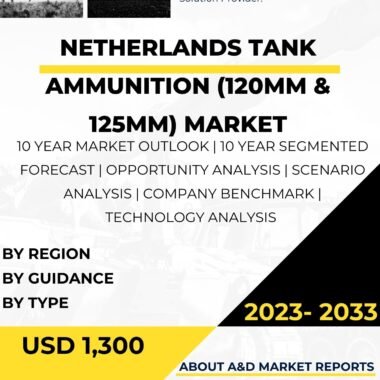Description
Tank ammunition is a critical component of the United States’ armored warfare capabilities, providing tanks with the firepower needed to engage and defeat enemy armored vehicles, fortifications, and personnel. The U.S. military employs two main types of tank ammunition: 120mm and 125mm rounds. These rounds are specifically designed for use in main battle tanks, such as the M1 Abrams and the M60 Patton, as well as in some foreign tanks operated by U.S. allies.
The 120mm ammunition serves as the primary armament for the M1 Abrams, one of the most advanced and formidable main battle tanks in the world. The M1 Abrams utilizes various types of 120mm rounds to address different tactical scenarios and target profiles.
One of the most common types of 120mm tank ammunition is the M829 Armor-Piercing Fin-Stabilized Discarding Sabot (APFSDS) round. This type of round is designed to defeat heavily armored targets, such as enemy tanks. The APFSDS round features a sub-caliber penetrator made of depleted uranium (DU) or tungsten, encased in a lightweight sabot. Upon firing, the sabot is discarded, allowing the penetrator to maintain its high velocity and kinetic energy as it penetrates the target’s armor.
The M830 High-Explosive Anti-Tank (HEAT) round is another important 120mm ammunition variant. The M830 is designed to engage a broader range of targets, including armored vehicles and fortified positions. The round contains a shaped charge warhead that focuses its explosive force in a directed manner, capable of penetrating heavy armor and causing significant damage to enemy vehicles.
For anti-personnel and general-purpose engagements, the M1028 Canister round is used. The M1028 Canister round is a specialized munition that releases a shower of steel flechettes upon detonation, creating a deadly cone of fire against enemy infantry and soft targets at close range.
In addition to the M1 Abrams’ 120mm ammunition, the U.S. military also operates tanks from other nations that utilize 125mm tank ammunition. For example, some variants of the M60 Patton tank used by the U.S. Army and foreign military services are equipped with a 125mm main gun. The 125mm tank ammunition is primarily associated with Russian and Soviet tanks, such as the T-72 and T-90 series.
The 125mm tank ammunition used by the M60 Patton and other tanks equipped with this caliber includes the 3VBM17 Armor-Piercing Fin-Stabilized Discarding Sabot (APFSDS) round. Similar to the 120mm APFSDS, the 125mm variant employs a sub-caliber penetrator and sabot design to maximize armor penetration capabilities.
Furthermore, the 125mm tank ammunition includes the 3VBK25 High-Explosive Anti-Tank (HEAT) round, which is the primary anti-armor munition for tanks equipped with the 125mm gun. The 3VBK25 HEAT round is designed to defeat armored vehicles and fortifications by employing a shaped charge warhead to focus its explosive force.
Both the 120mm and 125mm tank ammunition types are continually evolving to meet the challenges posed by modern armored warfare. Research and development efforts focus on improving armor penetration, accuracy, and lethality, as well as reducing the ammunition’s size and weight to optimize tank performance.
Additionally, the U.S. military invests in advancing targeting systems and fire control technologies to enhance the effectiveness of tank ammunition. Advanced sensors, ballistic computers, and stabilizing systems enable tanks to engage targets accurately and rapidly, enhancing their survivability and combat capability.
One of the key considerations in tank ammunition development is the ability to defeat advanced reactive armor systems. Reactive armor is designed to counter incoming projectiles by detonating an explosive charge, which disrupts the penetrator’s trajectory. To address this challenge, tank ammunition designers incorporate tandem warhead technologies and other countermeasures to increase the likelihood of defeating reactive armor and ensuring effective target engagement.
Furthermore, the U.S. military explores the use of programmable ammunition, which allows tank crews to select the detonation time and mode for specific scenarios. Programmable ammunition provides flexibility on the battlefield, enabling tanks to engage a wide range of targets effectively.
The versatility and firepower provided by 120mm and 125mm tank ammunition make them indispensable assets in armored warfare. These ammunition types offer tanks the ability to engage enemy armor, fortifications, and personnel with lethal precision. As technology and warfare continue to evolve, the United States remains committed to advancing tank ammunition capabilities, ensuring that its armored forces maintain their dominance and effectiveness on the battlefield.




